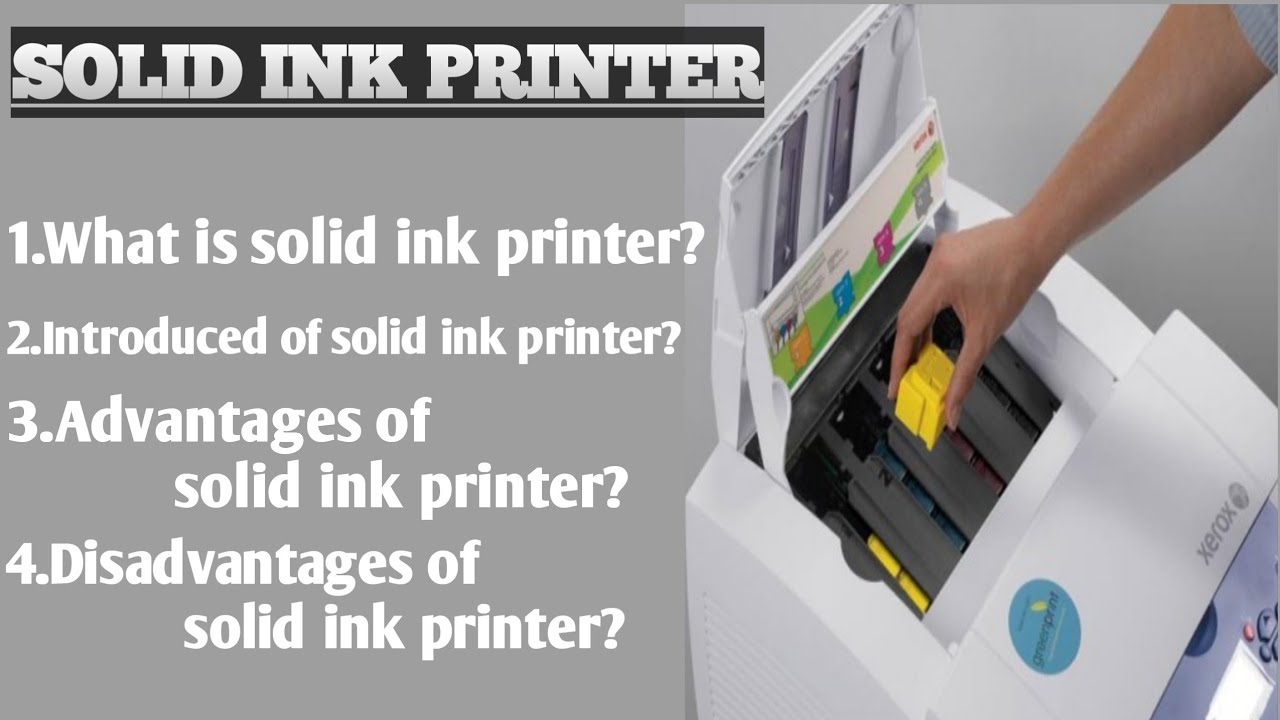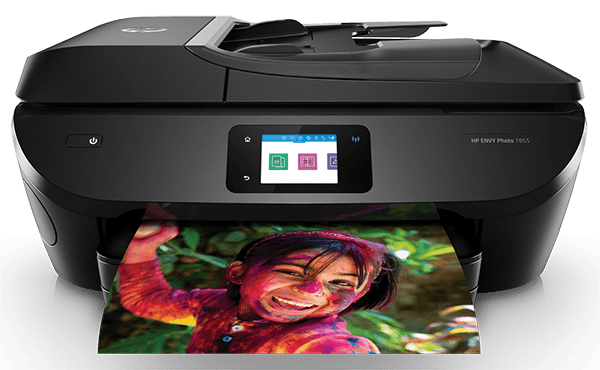"what Are Solid Ink Printers: A Comprehensive Look Into Innovative Printing Technology"
Introduction
The ever-evolving world of technology never ceases to surprise us with innovative solutions, and the world of printing is no exception. One such notable innovation is the introduction of ‘Solid Ink Printers’. Offering vibrant color prints and an eco-friendly approach, these printers have intrigued many. This article aims to explore what solid ink printers are, how they operate, their advantages and potential disadvantages, and how they measure against traditional printing devices.
What Exactly are Solid Ink Printers?
Solid ink printers are a fascinating innovation in the printing world, known for their distinct mode of operation. Instead of the conventional liquid or powdered ink found in standard printers, these devices use solid ink. The concept of solid ink printers was put into practice and brought to the forefront by Tektronix, a brand now integrated into Xerox.
Let's dig deeper into their key characteristics:
- Type of Ink Used: Unique to these printers is the use of solid ink blocks or sticks, moving away from the familiar liquid or powder ink. Interestingly, these sticks often resemble crayons and are made from non-toxic, resin-based materials.
- Print Process: Solid ink printers operate by melting down the solid ink once a print command is initiated. The melted ink is then sprayed on to a drum within the printer using a printhead. The ink makes its way from the drum on to the paper, resulting in high-quality prints that are dry and smudge-resistant.
- Color Quality: These innovative printers are famed for their stunning color quality brought forth by a color mixing process. The printer can simultaneously spray different colored inks onto the drum, enabling it to create an impressive spectrum of hues and shades. This unique process is what provides solid ink printers their edge in crafting vibrant, bright, and enduring prints.
This description offers a brief understanding of what sets solid ink printers apart. However, diving into their benefits and potential challenges can further help in assessing their suitability for your specific printing needs.
How Do Solid Ink Printers Function?
Unraveling the way a solid ink printer operates requires breaking down the mechanism into a well-sequenced process. Here's how these printers bring life to the digital texts and designs:
1. Commence of the Printing Process: The operation of solid ink printers initiates with the print command given to the machine. At this step, it's crucial for the ink in its solid form to be warmed up and reach its melting point.
2. Melting of the Solid Ink: The solid ink inside the printer gets heated and transitions into a liquid form. This conversion is critical for enabling the following steps of the printing operation, aiding in the projection of melted ink.
3. Ink Projection via the Printhead: Once the ink reaches a liquid state, the print head comes into action. The printhead is responsible for directing the melted ink onto a drum located inside the printer. It ensures that the ink is appropriately spread onto the drum surface.
4. Transferring Ink to Paper: The drum's role comes into play after the printhead has sprayed the liquefied ink onto it. The drum is tasked with the critical job of transferring the ink from its surface onto the paper. This transfer results in instant dry, smudge-free prints, an attribute hard to match by other traditional printing technologies.
5. Color Blending for superior Print Quality: Solid ink printers hold an edge thanks to an integrated process of combining different colored inks on the drum simultaneously. This color-blending process helps produce a wide spectrum of hues and shades, offering vibrant prints with vastly superior color quality.
In a nutshell, the operational mechanism behind solid ink printers exemplifies technological innovation. The sequential process that transitions ink from a solid state to a vivid print on paper underlines the superior color quality and environmentally-friendly attributes of these printers, establishing them as a worthwhile alternative to traditional inkjet or laser printers.
Why Opt for Solid Ink Printers? Analysing the Benefits
The merits of utilizing solid ink printers are highly varied and plentiful. Here's an exploration of the distinctive benefits that these printers deliver:
1. Superior Colour Print Quality: Solid Ink printers are renowned for exceptional colour reproduction. Their unique method of using melted ink to create prints results in bold, vibrant, and long-lasting colour output. This superior quality is a considerable advantage, particularly for high-quality graphic works and photographic prints.
2. Environment-Friendly Technology: Solid ink printers earn a green thumbs up due to their reduced environmental impact. The ink sticks used by these printers are encased in recyclable materials, significantly diminishing wastage.

3. Reduced Waste: In comparison with traditional printers that rely on cartridges, solid ink printers generate less waste. There is no cartridge casings or toner dust to dispose of, contributing to a cleaner, less cluttered printing environment.
4. Fewer replaceable parts: Solid ink printers are based on a relatively streamlined design, involving fewer replaceable parts. This results in less manufacturing, reduced inventory, and contributes positively to a lesser environmental footprint.
These advantages make solid ink printers an appealing choice both from a quality and eco-conscious perspective. However, a thorough evaluation must take into consideration potential drawbacks as well, ensuring a comprehensive understanding of the technology.
What are the Potential Drawbacks of Solid Ink Printers?
While solid ink printers have many advantages, they can also come with certain challenges. To make an informed choice, customers should keep these potential downsides in mind:
- Extended Warm-up Time: In contrast to traditional printers that start printing almost instantly, solid ink printers need time for the ink to melt before they can begin printing. This can potentially lead to more wait time, especially if the printer hasn't been used in a while.
- Increased Energy Consumption: In a solid ink printer, the ink has to be kept melted at all times. This means if the printer is left idle for extended periods, it can consume more energy compared to regular printers which usually go into power-saving mode when not in use.
- Costly Ink Sticks: While regular ink cartridges are relatively inexpensive to replace, solid ink sticks can be on the pricier side. This can raise the cost of operation, particularly for heavy-duty printing tasks.
- Water-Sensitivity: Prints from solid ink printers aren't water-resistant. If they are exposed to moisture, the print quality might deteriorate, potentially damaging the prints.
Remember, like any technology, solid ink printers too come with their pros and cons. Depending on your specific needs, priorities, and budget, you can weigh these factors to make an educated decision.
How Do Solid Ink Printers Compare with Traditional Devices?
Analyzing the similarities and differences between solid ink printers and traditional printers can offer valuable insights into their overall performance and utility. Rather than adopting an overarching standard of comparison, it's essential to inspect their distinct components to understand how these device types weigh against each other:
• Print Quality: Solid ink printers are renowned for delivering higher quality color prints, one area where they noticeably outperform traditional printers. By creating vivid and lifelike colors, these printers are an excellent fit for graphic design and photo printing tasks.
• Operational Costs: When comparing expenses, solid ink sticks often cost more than usual toner or cartridges, making the operational cost for solid ink printers slightly higher.
• Printing Speed: The pace of printing in solid ink printers can be marginally slower than traditional inkjet or laser printers, mainly due to the ink melting process.
• Environmental Impact: When it comes to the environmental aspect, solid ink printers have the edge. With fewer replaceable parts and ink sticks packaged in recyclable materials, these printers create less waste and have a lesser environmental footprint.
• Potential Hazards: One factor to consider is the sensitivity of prints from solid ink printers to water. Printed materials can potentially suffer damage when exposed to moisture, making them slightly less durable than their traditional counterparts.
In a nutshell, solid ink printers demonstrate a mixed bag of advantages and drawbacks when compared to traditional devices. While they offer superior quality, particularly for color prints and boast an environmentally-friendly design, they can be costlier and slower. Therefore, considering your specific requirements and priorities is crucial before choosing between these types of printing devices.

Conclusion
In short, solid ink printers represent an innovative printing technology that delivers superior print quality while being an environmentally friendly choice. Although they may have their potential drawbacks, the unique advantages they offer make them worthy of consideration for both personal and professional uses.
Related FAQs about what are solid ink printers
How does the quality of solid ink printer outputs compare with inkjet or laser printers?
In terms of color prints, solid ink printers typically offer superior quality due to their unique color blending process. The result is vibrant, bold, and long-lasting prints, making them an excellent choice for graphical and photographic prints. However, it's important to note that they are less water-resistant than outputs from inkjet or laser printers.
Are solid ink printers really more environmentally friendly than traditional printers?
Yes, solid ink printers are more environmentally friendly. They generate less waste due to their use of solid ink sticks, which come in recyclable packaging. Plus, they have fewer replaceable parts compared to traditional printers, reducing manufacturing waste and contributing to a lower environmental footprint.
What factors should I consider before investing in a solid ink printer?
Before investing in a solid ink printer, consider the print quality you need, particularly if you require high-quality color prints. You should also evaluate the overall operational cost, including the price of the solid ink sticks, and power consumption due to the continuous melting process. Lastly, consider the environmental factors and water sensitivity of the prints.


